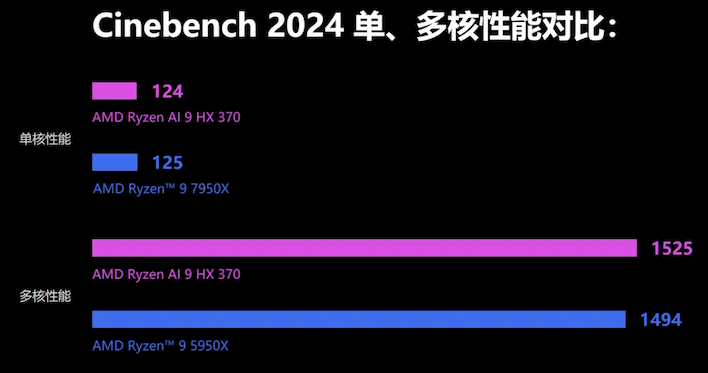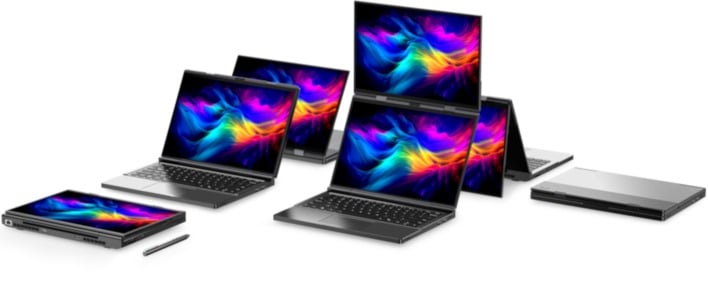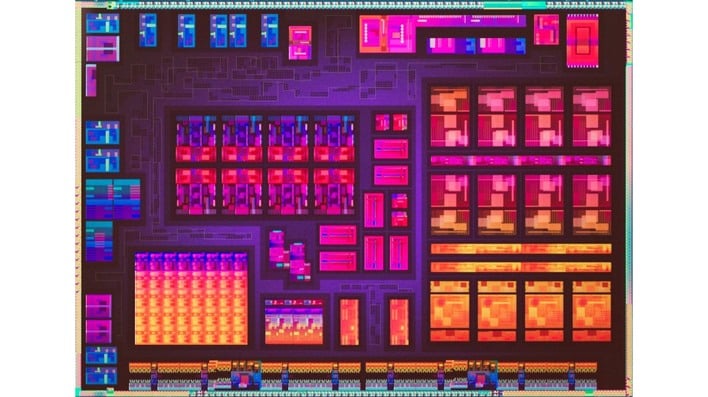AMD's Radeon 890M RDNA 3.5 GPU Obliterates 780M In Early Benchmarks
One of the manufacturers of such devices, known as GamePad Digital (or more commonly as just "GPD"), has just put up a post on Chinese social media revealing that the company's upcoming dual-screen laptop, the GPD DUO OLED, will not in fact use a "Hawk Point" Ryzen 7 8840U APU as previously disclosed at Computex. Instead, the company is swapping that system to a brand-new Ryzen AI 9 HX 370 chip sporting Zen 5 and RDNA 3.5.
The GPD DUO is quite an interesting device in and of itself, as a laptop with a pair of 13.3" 2880×1800 OLED screens, up to 4TB of NVMe storage, and OCuLink for optional discrete graphics. That's only interesting for folks who want such a system, though. Much more curious is that GPD have published some pre-release performance numbers for the Ryzen AI 9 HX 370 SoC that will power the DUO.

Above we see Cinebench 2024 results for the Ryzen AI 9 HX 370, although GPD has selected some interesting parts to compare against. The single-core score is apparently one point off of a Ryzen 9 7950X. That's a desktop CPU with a 170W TDP, while the SoC in question here is configured for 54W operation. Arguably odder is that GPD compares the multi-core score against a Zen 3-based Ryzen 9 5950X, but it's impressive that a 12-core mobile chip can handily outpace the sixteen-core desktop Zen 3 CPU.

The more interesting comparison is in terms of graphics, where GPD notes that the DUO configured for 54W is able to come very close to the performance of a mobile GeForce RTX 3050 while easily outpacing a GeForce RTX 2050. That part, confusingly, is also based on the Ampere architecture, just a very cut-down form of it. All three GPUs are considerably faster than the RDNA 3 integrated graphics built into Phoenix and Hawk Point, the SoCs that power the Ryzen 7000/8000 -HS and -U families.
Some of this improvement is doubtless due to architectural changes in the move from RDNA 3 to RDNA 3.5. AMD hasn't said much about what was changed or fixed in the new half-step iteration of its graphics architecture, but it is widely believed in the enthusiast community that RDNA 3 didn't quite hit AMD's intended targets, and that RDNA 3.5 is largely a "fixed" version of that architecture.
However, it has to be said that the GPU on "Strix Point," the chip that powers the Ryzen AI 9 family, is some 33% larger than the one on Hawk Point. Where Phoenix and Hawk Point have six RDNA 3 WGPs, Strix Point has eight. This means extra compute resources and, likely, extra raster resources, too. As such, some of the 31% uplift in 3DMark Time Spy scores is no doubt due to the 33% increase in GPU horsepower.




